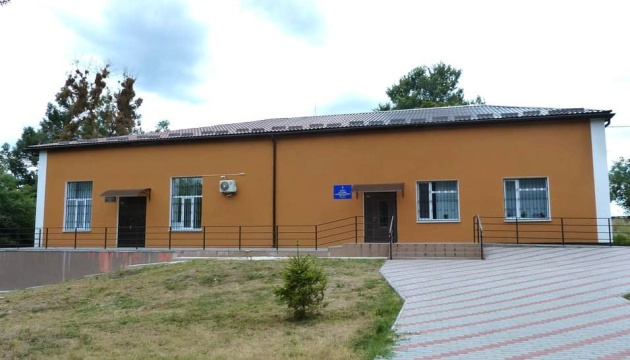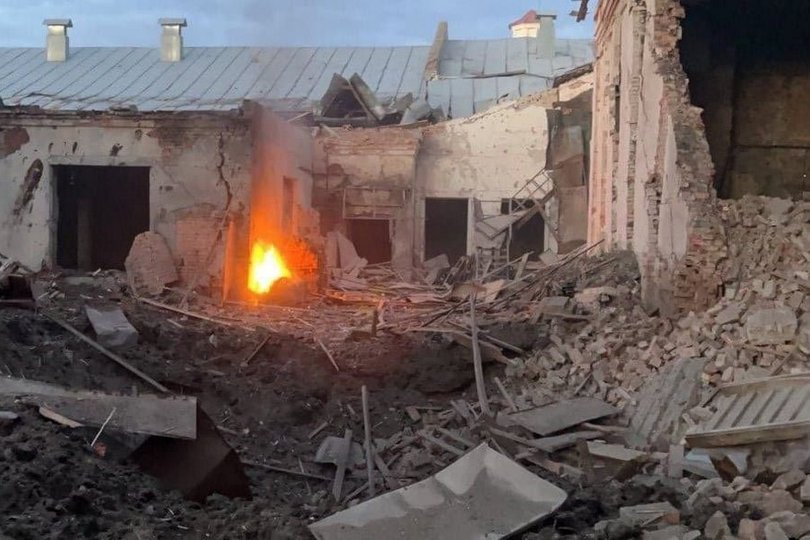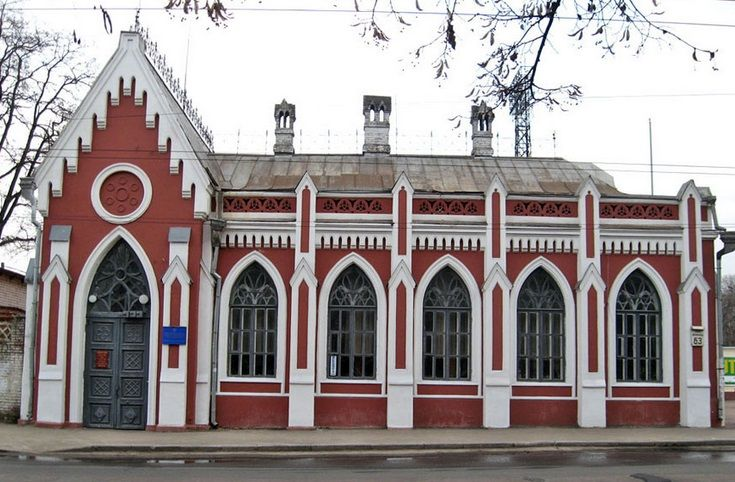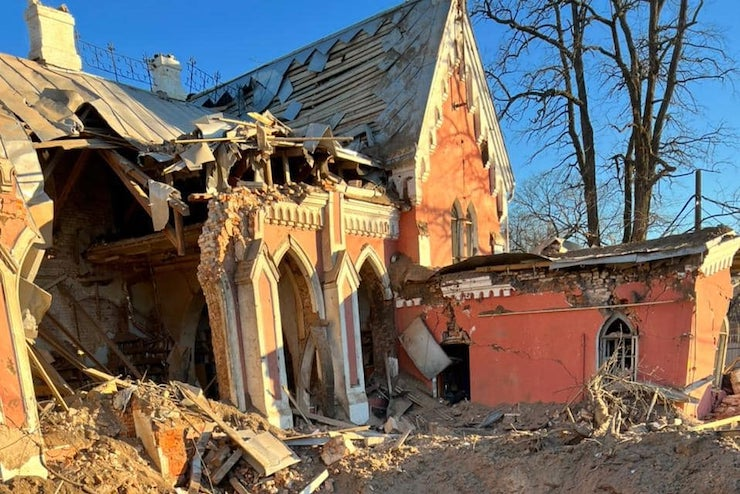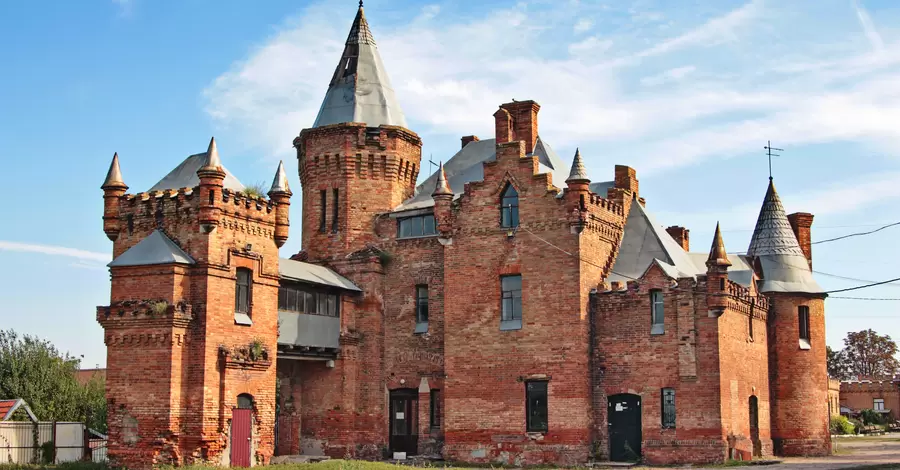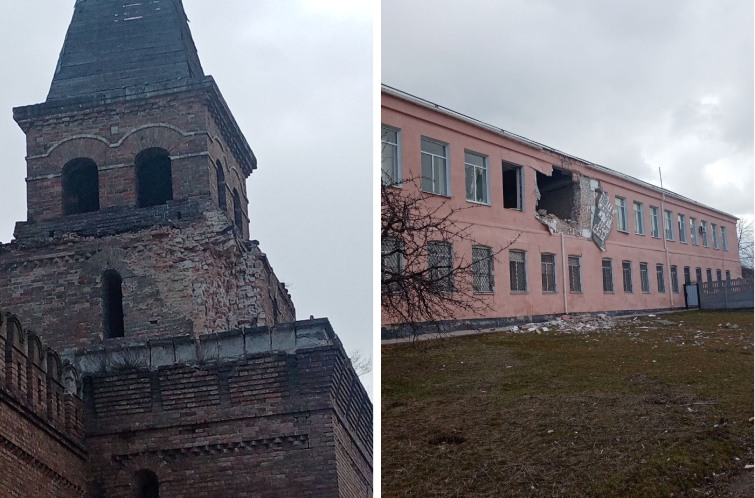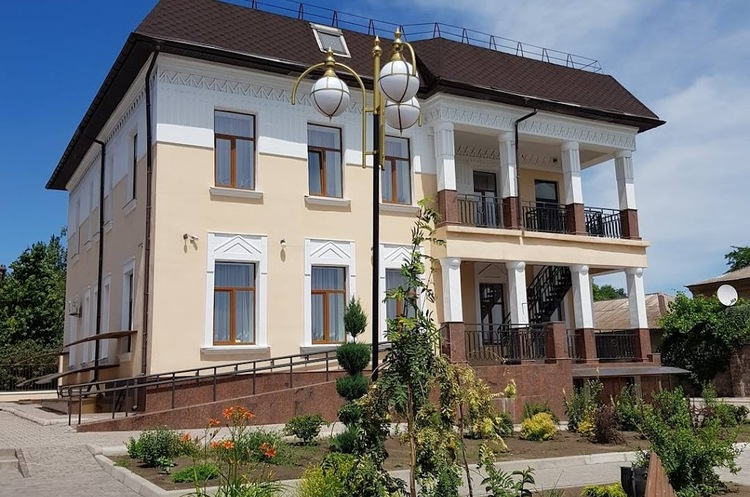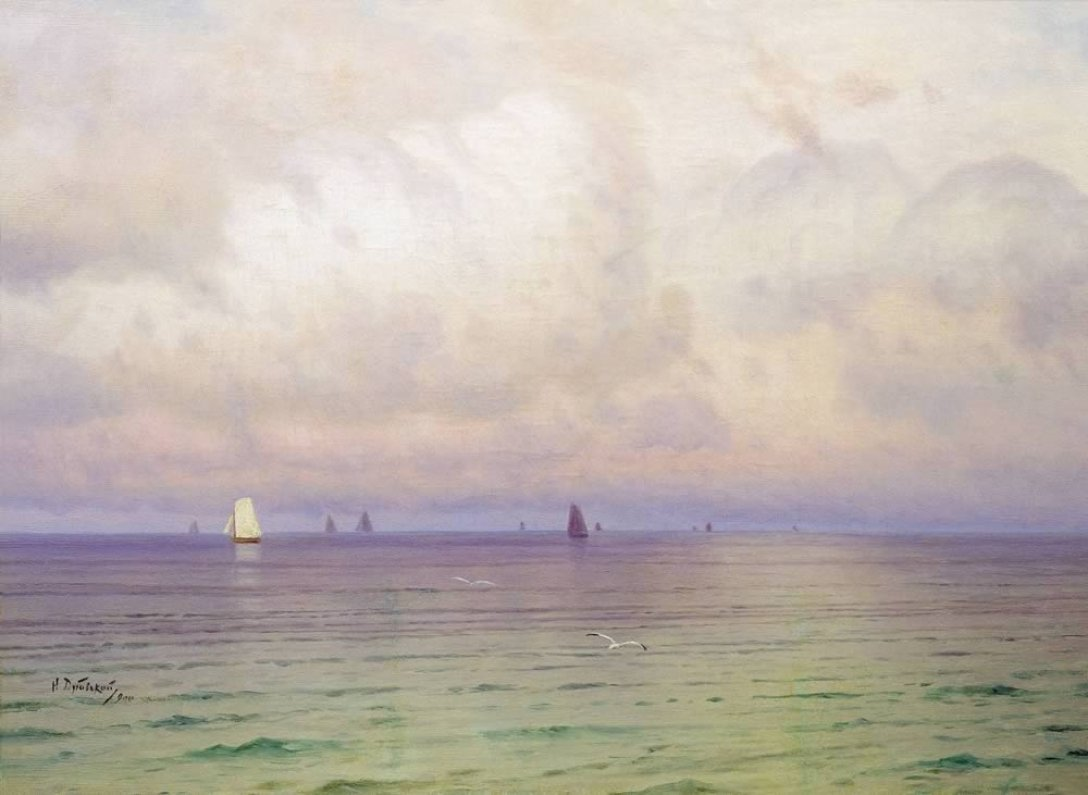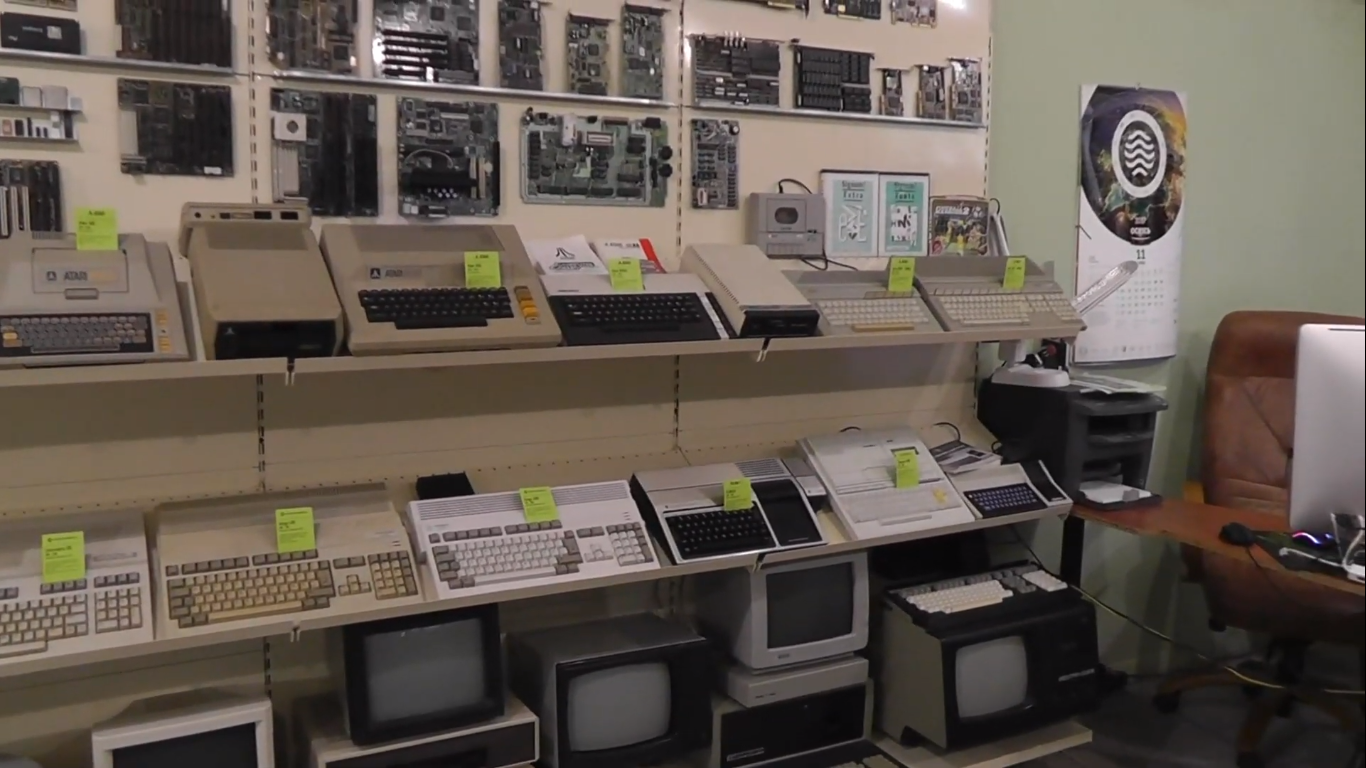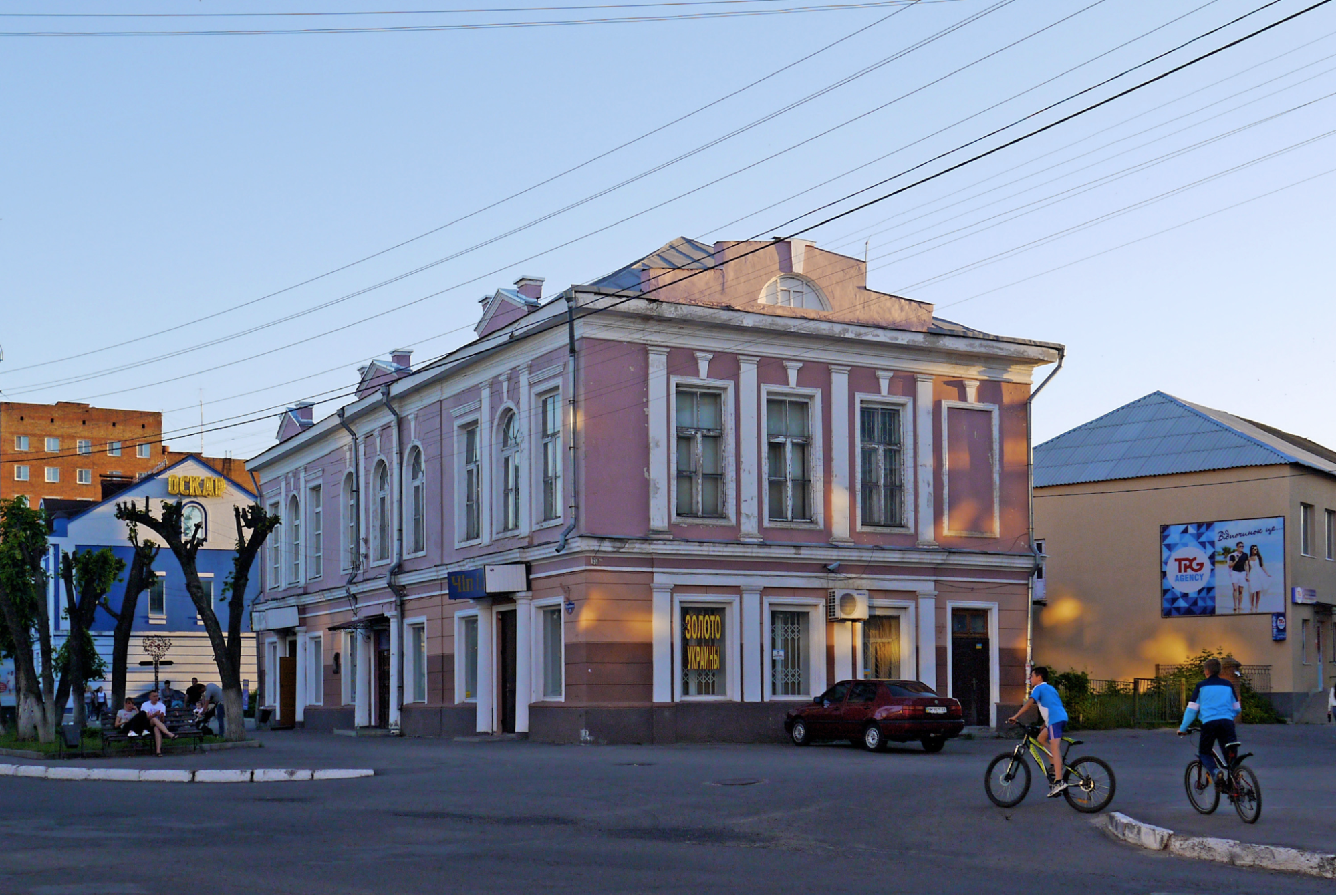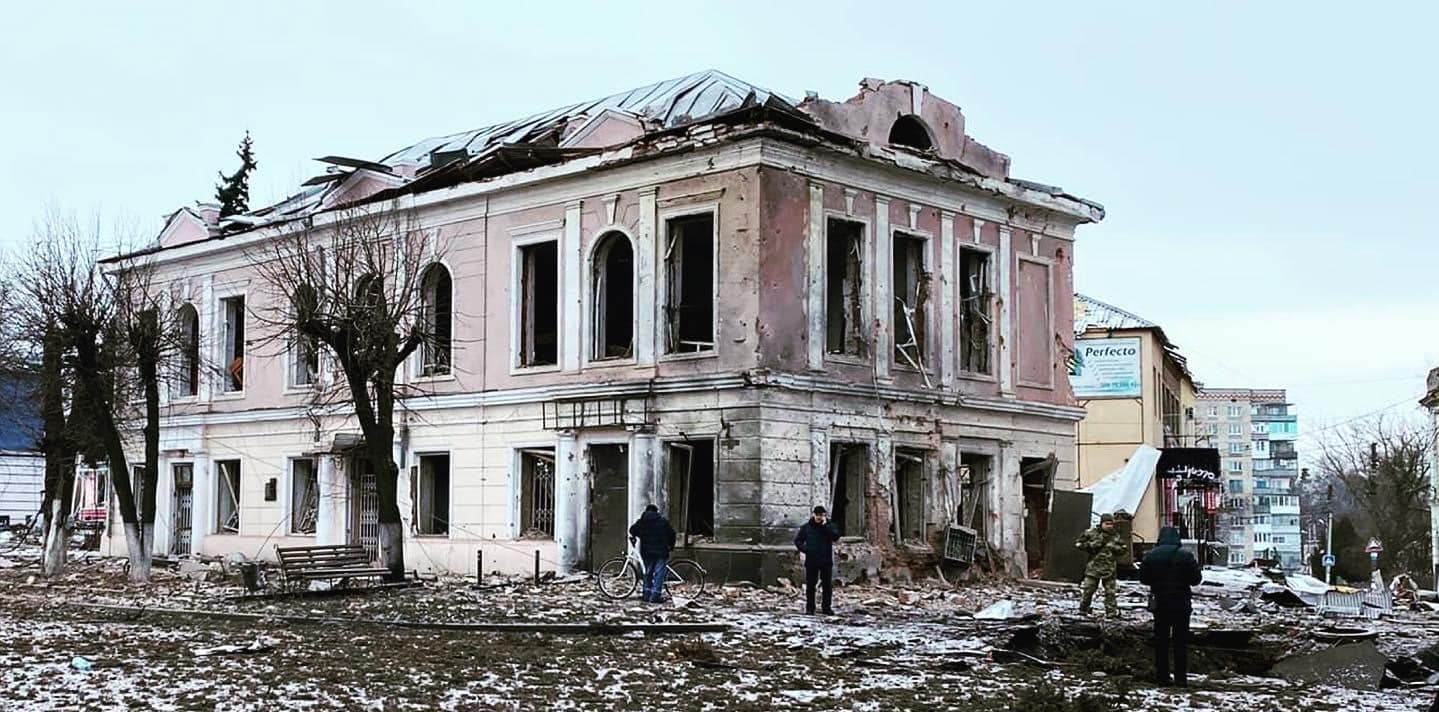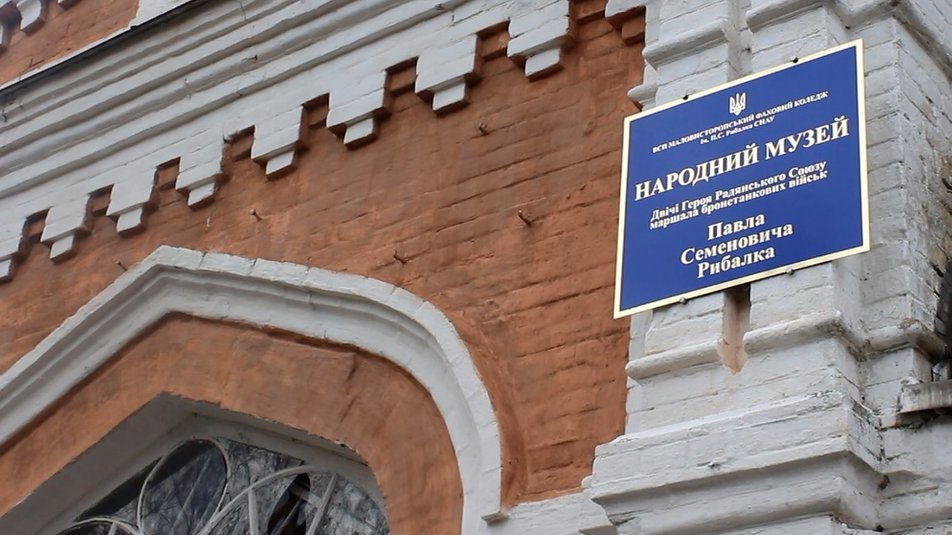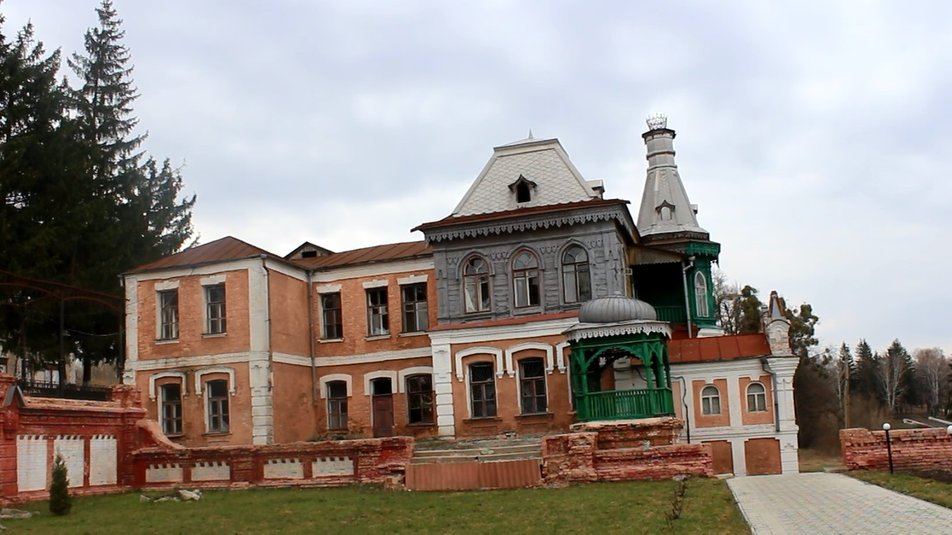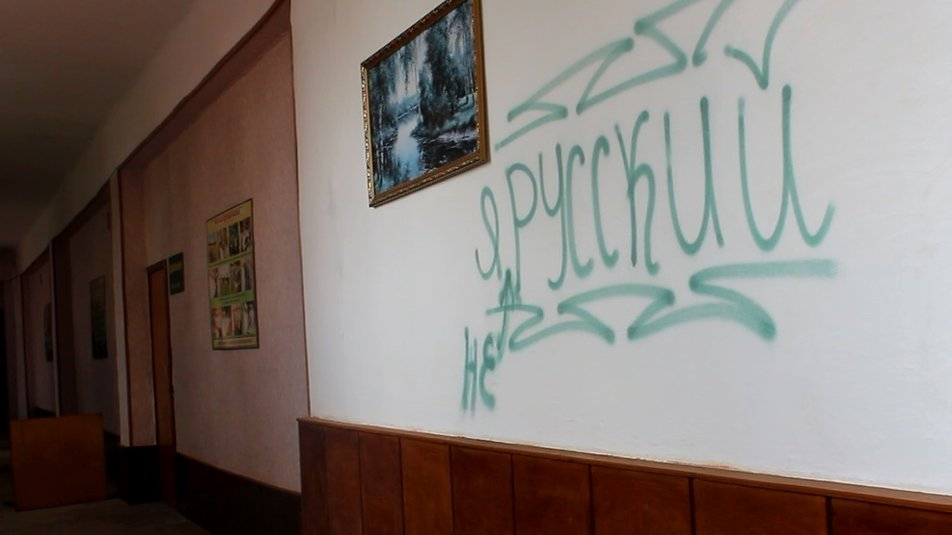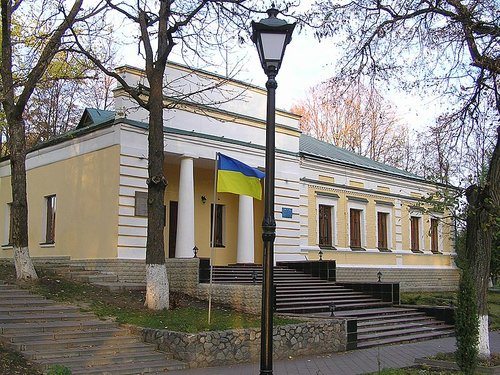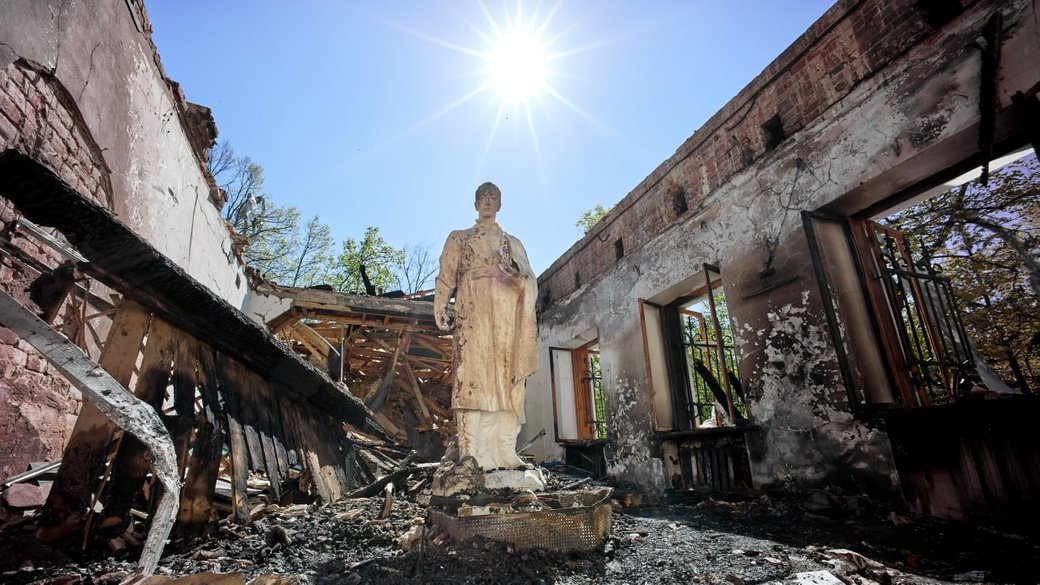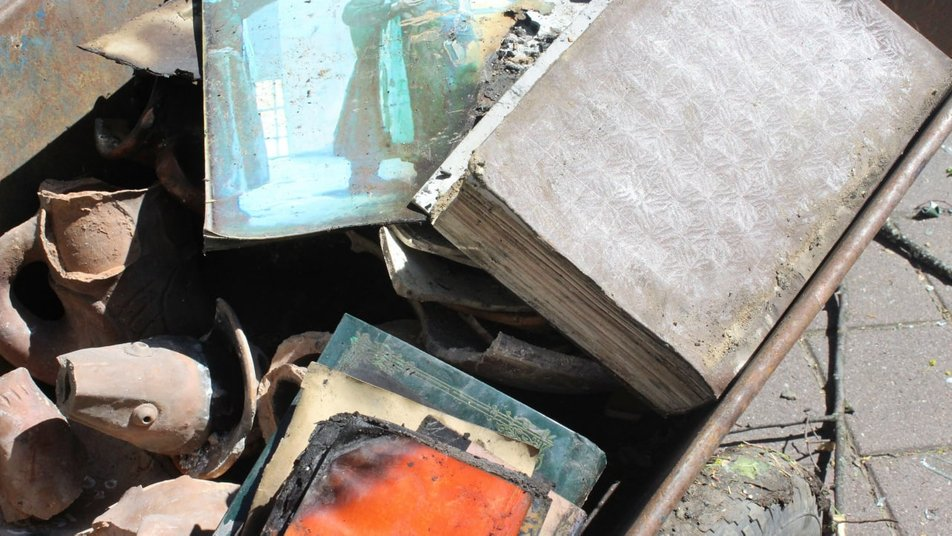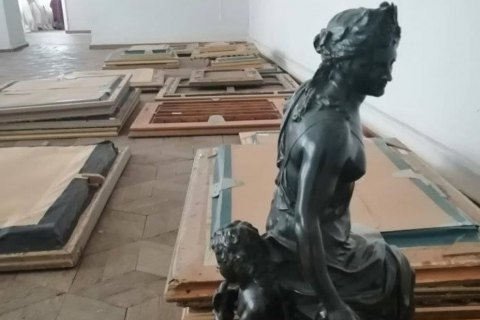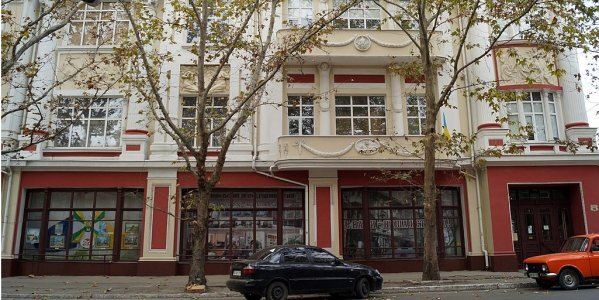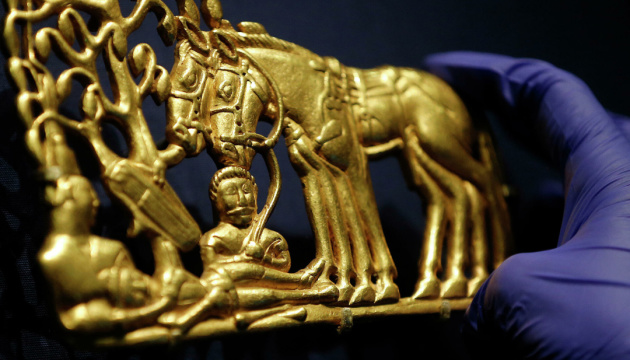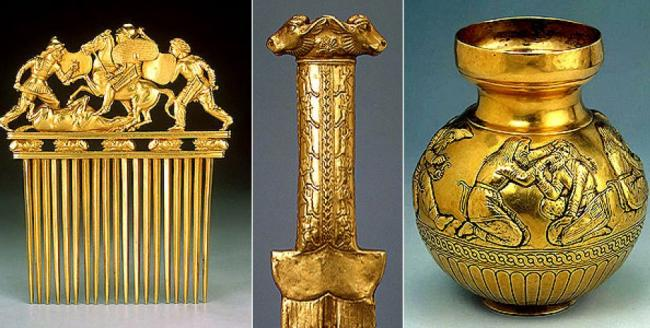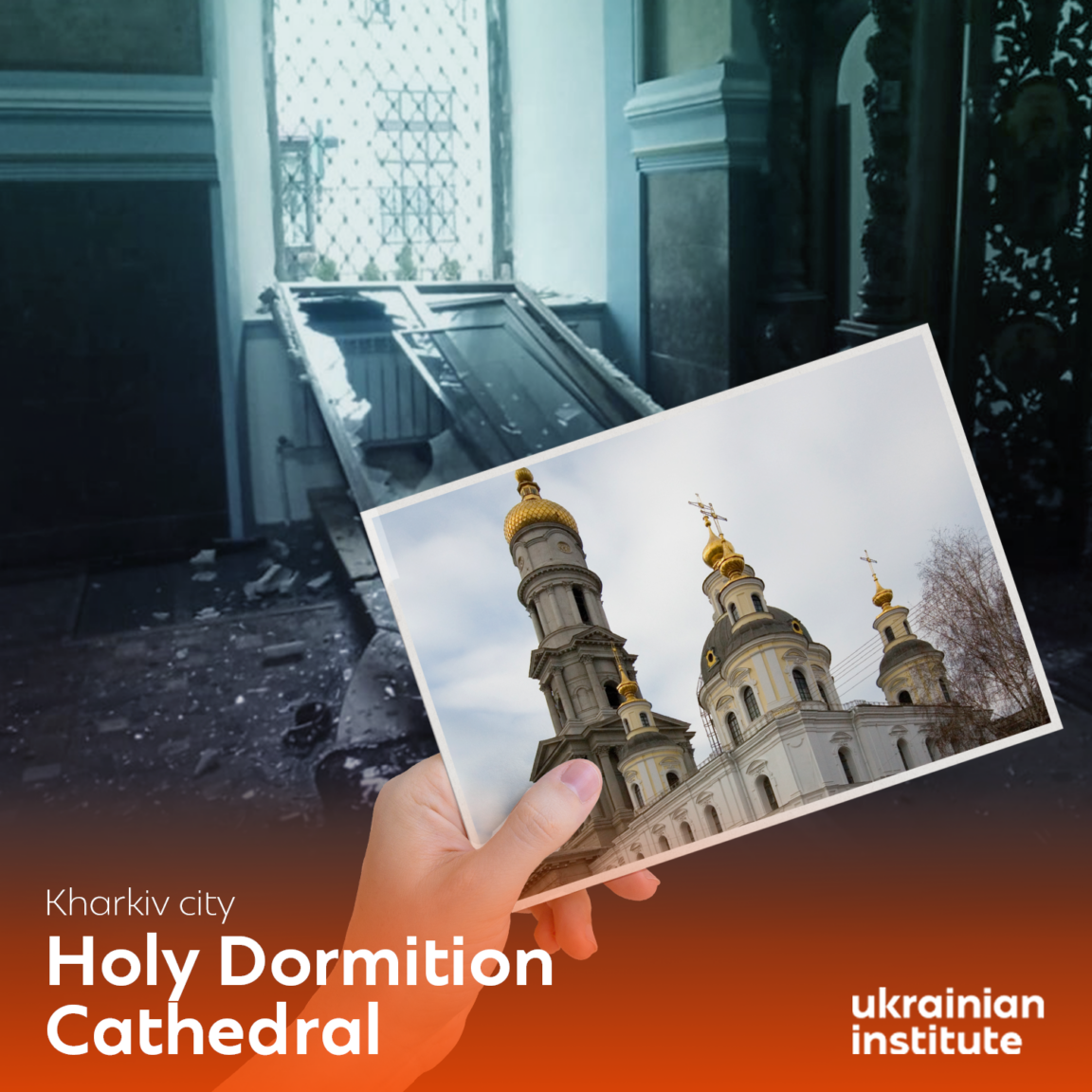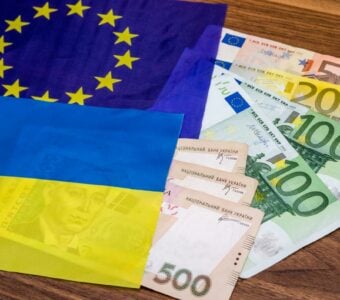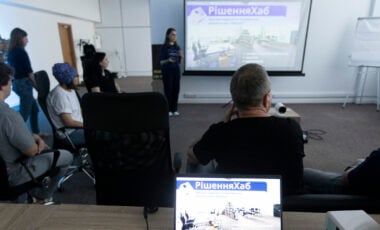Aiming Ukrainian culture: 10 museums affected by russian aggression
On International Museum Day, we are telling stories about Ukrainian museums that have literally experienced "the russian world." russia wants to destroy not only the Ukrainian army but also Ukrainian culture, which is why it targets museums and monuments. It is important to record this because all these — are war crimes of the russian federation, for which it will be held accountable.
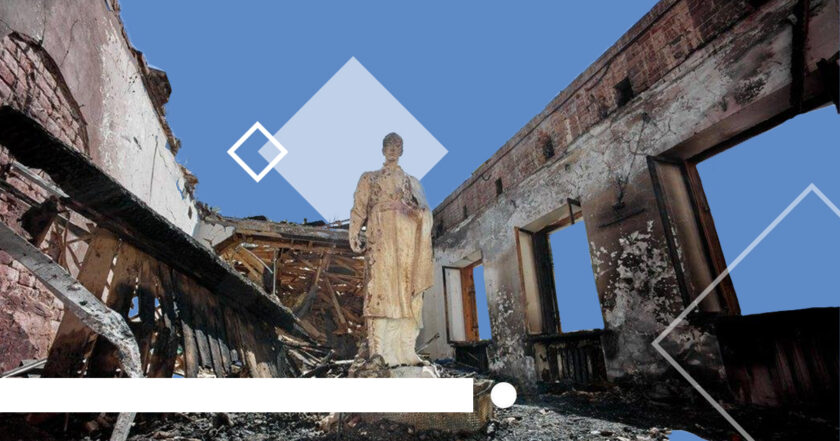
What is the problem?
For centuries russia has denied Ukraine's identity and its right to civilized life. And today, the horde, which invaded our country three months ago with weapons, is destroying everything in its path. Schools, hospitals, monuments, and architectural masterpieces are suffering. Ukrainian museums are being shelled and looted. Russian soldiers take priceless exhibits as trophies; they smash and burn them.
What could be seen during World War II was repeated. Rashysts are killing not only Ukrainians but also our cultural and historical heritage. They deliberately aim at unique buildings and symbols of cities because their real goal is to erase Ukraine and any manifestations of Ukrainian identity from the face of the earth.
What is the solution?
Try to preserve everything that survived. Protect the most valuable landmarks from possible enemy missile strikes or bombings. Record every episode, and document all crimes committed by a terrorist state. The world needs to know that we are fighting barbarians for whom nothing is sacred.
How does it work?
The Ministry of Culture, together with the Center for Strategic Communications and Information Security, collects information on the damage and destruction of cultural heritage sites committed by the russian occupation forces in Ukraine.
The Ministry of Culture has created a separate resource to properly document war crimes, crimes against humanity, and cultural heritage sites, committed by the Russian military.
Anyone with evidence of crimes can send photos and videos. Thanks to Ministry's efforts, the evidence will be transferred to the International Criminal Court in The Hague.
In the context of russia's full-scale war against Ukraine, according to the latest data, 242 cases of destruction of the Ukrainian cultural heritage by russians have been recorded. Thus, the occupiers destroyed or damaged at least 92 religious buildings, 35 monuments of history, architecture, and urban planning, 29 memorials honoring historical figures and events of the XIX – early XXI century, and 19 buildings and museums and parks. In addition, 33 houses of culture, theaters, libraries, and other valuable historical buildings came under enemy fire.
Cultural objects on the territory of 56 territorial communities in 13 regions of Ukraine were damaged and destroyed. Cultural heritage sites in the Kharkiv, Donetsk, Kyiv, Chernihiv, Luhansk, and Sumy regions suffered the most damage, where hostilities have taken place or continue. It is currently challenging to compile a complete list of destroyed and damaged cultural infrastructure, as part of the territory of Ukraine is under occupation by the russian army.
Today, on International Museum Day, we are talking about 10 Ukrainian museums that have suffered from the russian invasion.
Ivankiv Local History Museum
In the village of Ivankiv in the Kyiv region, the russian occupiers destroyed a local history museum. This museum houses about two and a half dozen works by world-famous artist Maria Prymachenko. The museum opened in 1981, although the house has a much older history: it is a manor house of the XIX century.
On February 28, a russian shell hit the museum building. As a result, a fire broke out, the roof collapsed, and flames engulfed the entire estate. The building burned down completely. But when the fire started, locals managed to save part of the collection. Museum employees took out paintings by Maria Prymachenko, rushnyky by Hanna Veres, photo albums, and household items despite the shelling. Everything they didn't have time to take out burned to the ground. About 10 Prymachenko's works were rescued, thanks to the courage of museum workers.
Museum of Ukrainian Antiquities (The House of Vasyl Tarnowski)
On March 11, as a result of russian shelling, the Museum of Ukrainian Antiquities, the house of Vasyl Tarnovsky, was partially destroyed. This original building, located in the center of Chernihiv, was built in the late nineteenth century. At different times there were craft classes for orphans, the Museum of Antiquities with a unique collection of works of art, the exposition of the Chernihiv Historical Museum, and since the 80s of the twentieth century – a youth library.
Vasyl Tarnowsky's house survived the Bolshevik shelling of 1918 and 1919. It survived World War II under German Nazi bombs. But the moscow horde came and destroyed a stunning and cozy building — a historical monument of local significance.
Popov Manor House
In Vasylivka, the Zaporizhzhia region, the russian occupiers looted the Popov Manor Museum-Park. Before stealing the valuables from the estate, the russists shelled the cultural institution.
Popov's manor is the only castle in the region. The palace was built in 1894. It resembled the architecture of medieval European castles. To this day, the jagged walls with a gate, several outbuildings, the Western Outbuilding (English Castle), a brick observation tower (keep), and a stable (horse yard) have survived.
Under Soviet rule, a pigsty was located on the estate's territory. The castle was demolished to build a House of Culture from these materials, and a school for children with mental illnesses was established in the estate's stables. In the 1980s, the preservation works started in the complex. In 1993, a museum was opened in the North Wing. Just before the russian invasion, in January 2022, the Popov Manor opened all the buildings of the complex for the first time. On March 7, russian troops fired at Popov's estate, and on March 15, the occupiers broke down all the doors, smashed the windows, and destroyed everything in their path. The russists took everything they could into their hands and bags, even stole a marble toilet — a museum exhibit — and smashed office equipment.
Kuindzhi Art Museum
During the three months of full-scale war and siege, the long-suffering Mariupol turned into ruins. Russist bombs also destroyed the Mariupol State Art Museum. It was located in a beautiful modern-style house. The house was built in the early twentieth century, and there was a private house, library, archive, and pharmacy in different periods. The building was renovated in the 2000s, and in 2010 the Kuindzhi Art Museum was opened here. The museum fund had about 2,000 exhibits, including works of art, applied arts, graphics, and sculpture.
On March 21, 2022, the museum building was destroyed by a direct hit by an air bomb. According to preliminary information, the museum did not have Arkhip Kuindzhi's original works. But the museum kept the originals of other Ukrainian artists – Ivan Aivazovsky, Mykola Glushchenko, Tatiana Yablonska, Mykola Dubovsky, Mykhailo Deregus, and others. The russian occupiers have confirmed the theft and removal of more than 2,000 unique exhibits from Mariupol's museums in occupied Donetsk. Their fate is currently unknown.
Computer Museum
The collection of a private non-profit museum of retro computers and consoles, with half a thousand exhibits, was also destroyed by enemy bombing in Mariupol. "Well, that is all. There is no Mariupol Computer Museum anymore. All that is left of my collection, which I have been collecting for 15 years, are just fragments of memories on the FB page, the museum's website, and radio station," the founder of the Museum of IT Development wrote on his Facebook page on March 21.
The Mariupol Computer Museum is a non-profit project of enthusiast Dmytro Cherepanov. The museum had a collection of exhibits of more than 120 computer models and game consoles of the last century — a total of more than 500 exhibits in the IT field from the 1950s to the early 2000s. "We did not leave the city in the first days of the war, hoping that Mariupol would survive and not be occupied. But we were very wrong and underestimated the scale and brutality of the russian invasion," Dmytro admitted. Now he and his family are in safe territory. He believes in the victory of Ukraine and dreams of making a new collection and opening a new museum.
Okhtyrka Local History Museum
On the night of March 7-8, for two hours, the occupiers bombed the peaceful town of Okhtyrka in the Sumy region, which had no military units nearby. About two dozen people were killed and injured in the city that day, and many buildings and infrastructure were damaged. The Okhtyrka Local History Museum building was also hit. Shells destroyed windows and the roof and damaged the walls.
Okhtyrka Local History Museum is located on the main city street in a historical building of the XIX century. Until the terrible night, this house "lived" a story that told about Okhtyrka and its founders from the XVII century. The museum fund consisted of 9,815 museum items related to nature, history, and culture.
For almost two months since March 9, the museum staff, volunteers, and relatives cleared the museum ruins. "History unites people in challenges, for the sake of the future, for peace. The first step towards the restoration of the historical monument has been taken. We are sure that soon the renovated museum will open its doors to visitors and will continue to diligently preserve the glorious pages of the life of their native land!" residents of the city hopefully look into the future.
Marshal Rybalka National Museum
The "liberators" who made May 9, 1945, their religion, honor the World War II veterans only verbally. In the Sumy region, russian tankers looted the museum of the panzer troops marshal Pavlo Rybalko, who liberated Ukraine and Europe from the Nazis during World War II. The museum is in the village of Maly Vystorop. The russian tank brigade entered it on March 17, and the village was under occupation for eight days. "They did whatever they wanted here: they robbed and mutilated. Our material and technical bases have been destroyed," said a resident.
Along with the museum, there was also a local college named after the two-time hero of the Soviet Union, Pavlo Rybalko. The occupiers threw textbooks and supplies out of the college windows and smashed computers. They left inscriptions on the museum walls. The museum exposition dedicated to the events of World War II was also damaged.
The head of the National Museum is Marshal's grandson Volodymyr Rybalko. "It is sad to look at all this. They took everything that was shining, everything that interested them. They pulled it into their pockets and disrespected the man who liberated Ukraine, Poland, and Czechoslovakia from fascism. The National Museum kept a cigarette case of the marshal's son, Yevhen Rybalko, who defended Kharkiv from the Nazis in the summer of 1941. Unfortunately, Yevhen died missing. The occupiers snatched this cigarette case from the stand. "There is nothing sacred for these people. We shouldn't call them people, " said the museum's director.
Skovoroda National Museum
The National Museum of Hryhoriy Skovoroda was destroyed by a direct hit by a russian missile on May 7. A shell flew under the roof of the building, and a fire broke out. The fire engulfed all the museum premises. The 35-year-old son of the museum's director, who remained to guard the premises that night, was wounded during the shelling.
Only museum walls remained after the russian shelling. After the fire, employees collected broken jugs and burnt and wet books. Some of the exhibits remaining on the premises were also saved, although they were in a terrible state. Fortunately, the most valuable items of the exhibition were hidden after the full-scale invasion of the terrorist federation in Ukraine.
The museum is located in the village of Skovorodynivka. It was an estate of the XVIII century, where Skovoroda worked for the last years of his life and near which he was buried. Skovorodynivka is far from other villages and infrastructure facilities. There are almost only fields nearby. "I do not doubt that they intentionally aimed Skovoroda. He once said: "Do not fraternize with those hiding evil." This is evidence that this is a conscious ideological action. They called Skovoroda the first russian philosopher. Skovoroda's grave is nearby. They hit the heart of the Ukrainian philosopher," commented Oleksandr Tkachenko, Minister of Culture and Information Policy, on the destruction of the museum by the occupiers.
This winter, Ukraine will celebrate the 300th anniversary of the Ukrainian philosopher. Oleh Synegubov, the head of the Kharkiv Regional State Administration, promises that the museum building will be restored
Kharkiv Art Museum
The Kharkiv Art Museum also suffered from shelling by russian troops. The facade, windows, and stained glass windows were damaged there. Fortunately, the exhibits survived, but the museum found itself in difficult circumstances. The blast shattered the glass in most windows. The building needed to be urgently isolated from the street air, which could destroy works of art stored in the museum.
Мелітопольський краєзнавчий музей
Melitopol, in the Zaporizhzhia region, is currently occupied. It is difficult to say for sure what is happening there today. But the Minister of Culture and Information Policy Oleksandr Tkachenko states that the Scythian gold unique collection of the 4th century BC from the Melitopol Museum of Local History most likely was stolen by the occupiers.
The city administration and museum staff hid a collection of Scythian gold back in February. Since then, the occupiers and local collaborators have been actively looking for it. The pro-russian page showed a video of the russian-appointed "director" of the local history museum, Yevhen Horlachov, saying that his associates spent a lot of energy looking for the Scythian gold, which was hidden by museum staff. The location of the collection was, in fact, given out by collaborators," local publications report. It is yet unknown where the russians took the stolen collection.
За даними Кримськотатарського ресурсного центру, викрадено 1841 одиницю музейних предметів, серед яких історична зброя, прикраси з Мелітопольського скіфського кургану (історичний період 4 ст. до н.е.), старовинні монети, ордени та медалі радянського часу.
Офіс генерального прокурора заявляв про початок кримінального провадження за фактом порушення законів і звичаїв війни у зв'язку з тим, що російські військові та представники окупаційної влади викрали історично-культурні цінності з Мелітопольського краєзнавчого музею.
More useful solutions!
The whole world must know about the horrible crimes and barbarism of the russian occupiers. The Ukrainian Institute launched a digital project, "Postcards from Ukraine," to tell about them. The project aims to record the damage caused by the russian occupiers to Ukrainian culture after the bombing. Every Ukrainian can share postcards on social networks.
"Today, we need more solidarity and support from the international community than ever," stated the Ukrainian Institute. "russia is destroying the centuries-old history of Ukraine. Their weapons do not stop at the paintings of Maria Prymachenko, the memory of the Holocaust memorial "Babyn Yar", the Cathedral of the XVIII century, and the monuments of constructivism in modern architecture. Distribute postcards on social networks, and send them to those having influence and voice. Use the hashtag #PostcardsFromUkraine."
Postcards from Ukraine can be seen on the website of the Ukrainian Institute. Download them to your smartphone and send them to friends around the world! Let the world know the truth.


